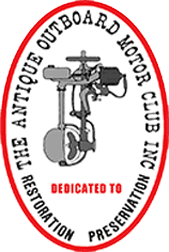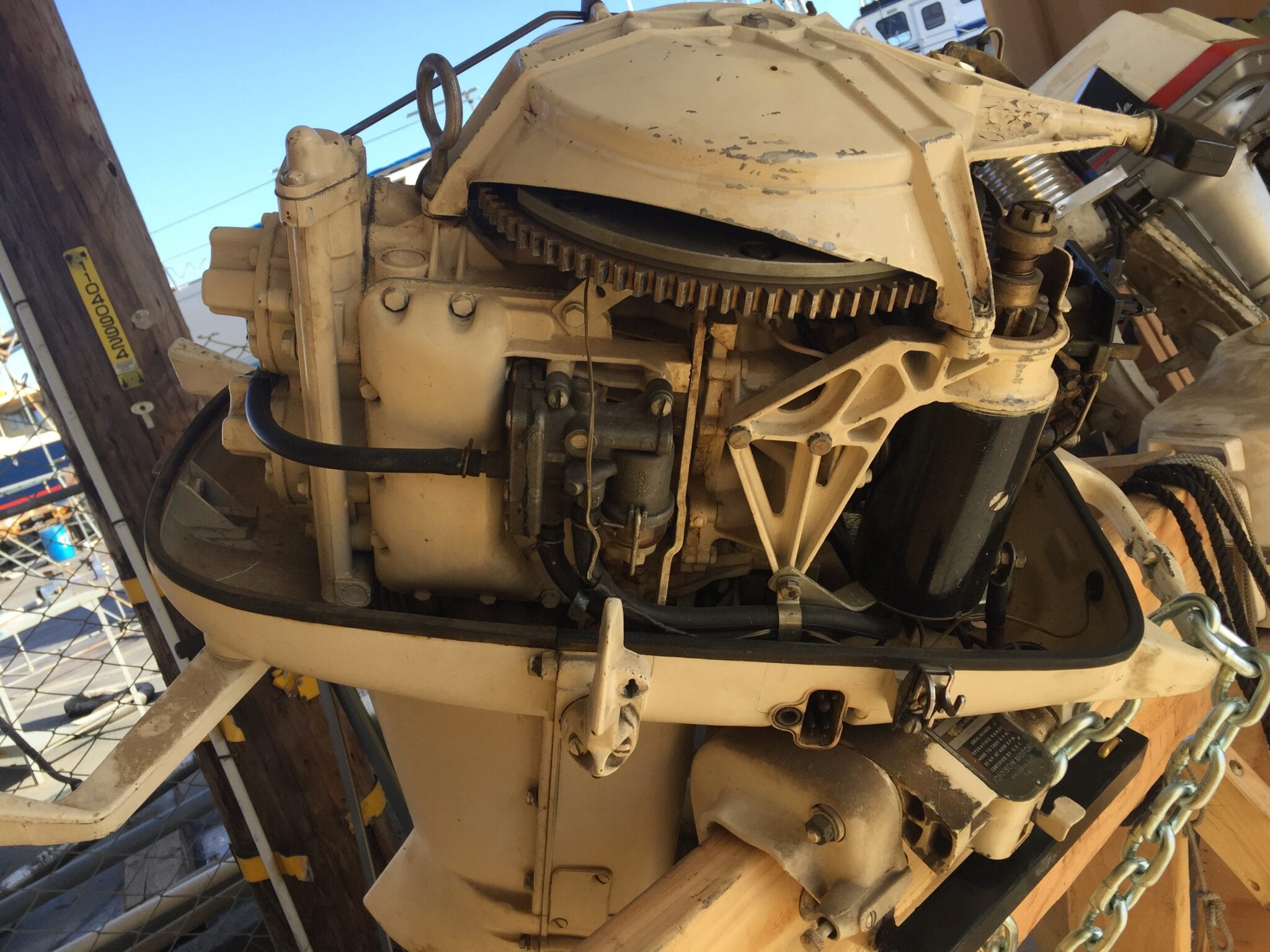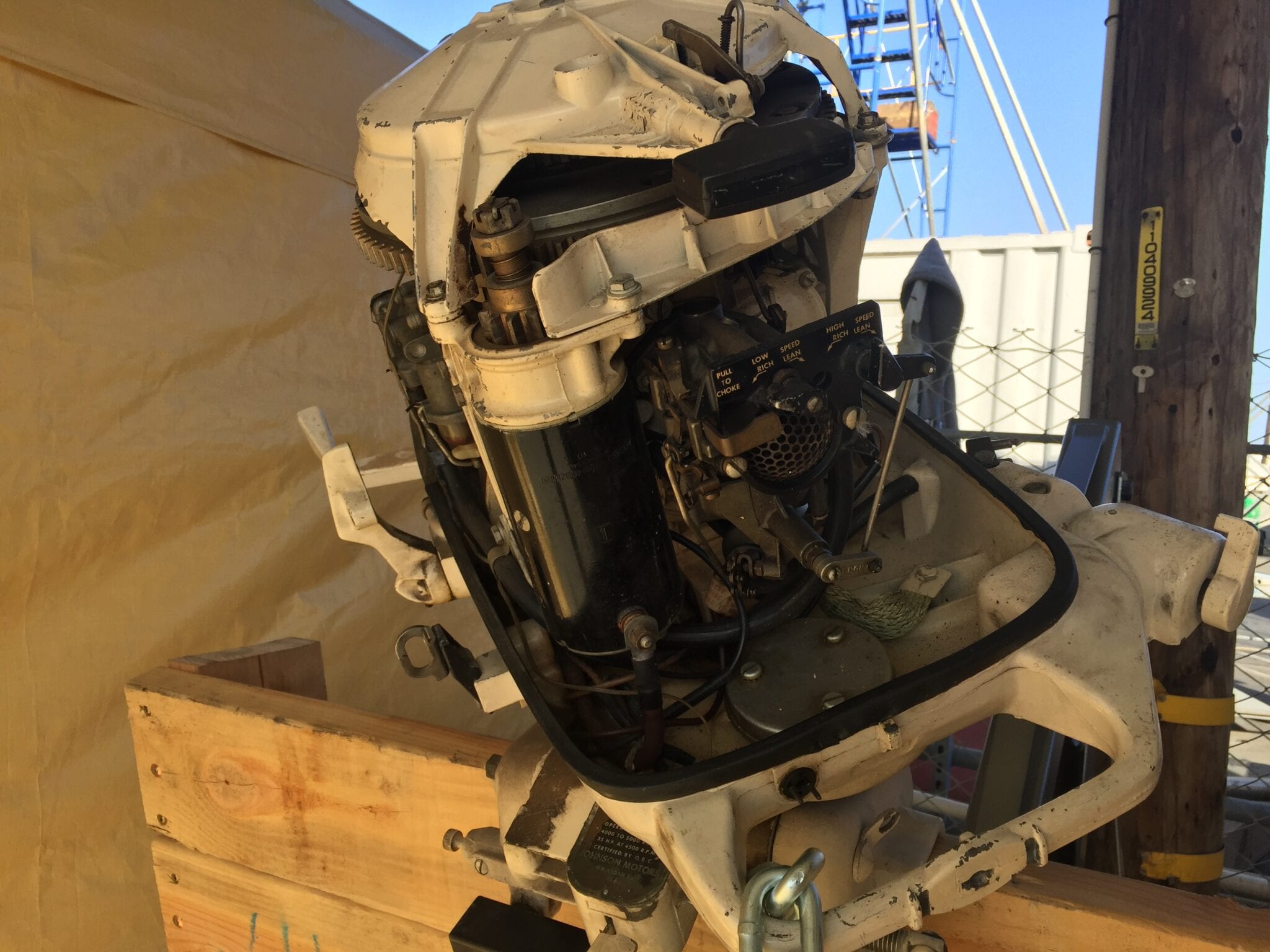Home › Forum › Ask A Member › 1959 Johnson RDSL 21B Info Needed
- This topic has 30 replies, 6 voices, and was last updated 4 years ago by
fleetwin.
-
AuthorPosts
-
March 18, 2021 at 11:39 pm #234241
Hi: I have a 1959 Johnson RDSL 21B long shaft elect start that fits my 1059 Thompson Sea Skiff perfectly, in size and period. Original with boat back ‘then’. I want to keep it that way but have a frozen gear unit. Haven’t dug into it yet but will soon. In the mean time I have bought a parts manual and an aftermarket maint. manual that covers all sorts of years and models. More confusion that clarity! So, does anyone have a real deal maintenance manual and or a users manual, if they offered such things in those days? Also, does anyone know what the RDS stands for? I guess the L is for long shaft, the 21 is a sequence Number that increased each year and the B is to designate that a design mod was done. How do I find out what was done? And also in one onsite listing I found that the suffix ‘G’ was also put on.
There is a two conductor cable, very light gage wire coming out from under the fly wheel and going to a twin prong male plug mounted through the bottom casting just behind where the steering cable will secure onto the engine. I was hoping that this was a lightweight charging connection, Cannot find mention of any charging capability on this engine on anything I’ve read though. Anyone know for sure what it is? There is a female receptacle that plugs into it and light gage wires go forward toward the barely area under drivers seat. I don’t think they go to dash or motor control unit..
Well that’s about all for now. I may be looking for a new gear housing as the pics I took of it last week show what I think are hole corroded thru the skeg at about where the ‘bottom’ of the gears would reach. I will know more on that thing when I get back from this trip next week. By the way a big thanks to Bob Wright who sent a number of pics of his own gear unit rebuild that cleared a lot of questions up for me. Thanks Bob!!-
This topic was modified 4 years ago by
 Mumbles.
Mumbles.
March 19, 2021 at 8:08 am #2342622 wires from the mag plate….. stop wires probably…shorting the points connected wires kills the ignition…. have you puled the FW yest to inspect the coils and all ?? if the wires are on the points they are kill wires .
as a aomci member you have access to the Garry’Ssdrop box …. get the big red johnson manual file it contains 99% of what you need I got mine years ago from site in europe (now dead becasue of ADOBE r.i.p.)
go to MEMBERS ONLY …INNER SANCTUM…. RESOURCES…. Garry’S ..drop box … find the red book
I then had my file printed in a local print shop and spring bound
Joining AOMCI has priviledges 🙂
March 19, 2021 at 9:29 am #234273As you figured out, the “B” identifies any mid-year engineering changes—IF—there were any changes. Could be as simple as a screw or as significant as a piston. But don’t worry about it unless you go to order parts and find the parts book says “B models only”. Otherwise, it means nothing if there were no changes.
March 19, 2021 at 9:30 am #234274Yes, most likely kill wires if black and coming from under flywheel. DON’T apply 12 volts to those wires. This motor doesn’t have a charging system. There was an optional generator kit available, but you probably don’t need it. The only load on the battery is the starter which doesn’t take a lot of juice. Unless you have have a bunch of accessories, you won’t have to charge the battery very often. I had a 1957 Lark 35hp on my pontoon and I hooked up a small solar trickle charger which kept the battery charged all season.
March 19, 2021 at 11:11 am #234285The two leads are “stop leads”, like others have said…No battery charging system on this engine….You could find a generator, but you will need to find a regulator also. I’m pretty sure the added wiring is in your harness already, perhaps not.
OK, how do you know the gearcase is froze up? Have you removed the gearcase? Have you drained the gear lube? I understand you wanting to keep the unit original, meaning you want to keep the original gearcase. The good news is that any damaged bearings can be replaced, so the outer housing can be kept original. The only issue might be a crack in the skeg caused by water intrusion that was allowed to freeze over the winter, cracking the skeg. So, please answer the questions I have asked so we can help you.
And yes, those aftermarket “fits all” service manuals are very confusing. You mentioned having a parts manual for this engine, be sure it is the correct one….There were many minor changes made to these gearcases over the years, it is important to get the correct parts. I believe the original service manual for this engine is referred to as “the red book” from Johnson and is hard to find. Perhaps someone can copy the pages for you. Later model OEM manuals can be found that have a dedicated section to this style gearcase. Unfortunately, some of the special tools might have changed a bit aligning with the changes over the years.
So, let’s start slowly with this project, so we know exactly what you have, and what is wrong with it….March 19, 2021 at 5:39 pm #234342Yes, the separate charger is in my future it seems. I have to remember that these engines were designed before many elect devices were taking to the water! I only have nav lights to worry about but where the boat will be at Donner Lake when out of the water will need a long extension cord to a power point unless I go the solar plane route. Could remove the battery from the boat too, that may be the better option after thinking about it. The ‘crack’ in the skeg isn’t a crack it looks like just good old corrosion. It is reputed to be a fresh water engine but… We will see when I return from this trip and get back to the boat on Sunday. I worry about corrosion because I had a 50ft. Alum boat that was correctly built from 5056 alloy and never suffered through my ownership but a lot of folks who had ‘alloy’ boats were alway asking me what i did ‘special’ to keep the aluminum termites at bay. I did a lot of ‘isolation’ and the boat was built of the right stuff. Some of my alloy boat owing friends were not so fortunate. Not knowing what alloy these motors are cast from is a worry for me now that I see this on my skeg. Time will tell.
Thanks for your input TomMarch 19, 2021 at 5:42 pm #234344I don’t know if previous Thanks went through, so THANKS for pointing me to Gary Ss Red Book! Already it answered a question. Downloaded as a PDF sure makes it easy. Tom
March 19, 2021 at 5:49 pm #234345OK, well you really didn’t answer my questions….So don’t know how to advise about the gearcase.
March 19, 2021 at 6:14 pm #234348Hi, sorry about not getting back to you! I am currently on Maui returning to the project on SF Bay on Sunday. I will have a further exam of the gear case problem then. But for now, the only indication I have of a ‘frozen’ gear case is that the drive shaft will not turn by hand. It is BTW separated from the upper works. I have tried to ‘shift’ it also without luck. I did not notice the corrosion holes when I initially unloaded the engines (I had 8 given to me) onto the stands I made. Sort of overawed by the whole thing at the time. I just saw this hole in the skeg casting in a photo I took and was looking at here on the island and am thinking it is high enough to breach the bottom of the gear case and flood the case with water. Fresh water is bad enough but if it is actually salt water corrosion then it opens up an entire other can of worms! I was told all the engines were fresh water engines and from the location (Sacramento CA) it could go either way. Do you know if a zinc anode was provided for in these engines? Bob Wright kindly provided me with some pics of his well documented rebuild of a very similar gear case so at least have a few pointers and better confidence that when I open it, parts won’t go flying about the place! Is there any reason the ‘forward’ gear seems to be so much more expensive to buy that the ‘reverse’ gear. I have been hunting around because if worst case, the gears will have been sitting in a salt water mix of some sort for the past 10 years or so then I would expect them to be beyond reuse. The gears ‘look’ too similar to warrant such a difference in asking prices. Must be a reason though. Thanks, don’t worry, more when I am able to get my hands dirty! Thanks Tom
March 19, 2021 at 8:03 pm #234360I forgot to attach the only pic I have here of the gear case. I hope it shows something useful. Thanks Tom
-
This reply was modified 4 years ago by
 Mumbles.
Mumbles.
-
This topic was modified 4 years ago by
-
AuthorPosts
- You must be logged in to reply to this topic.




